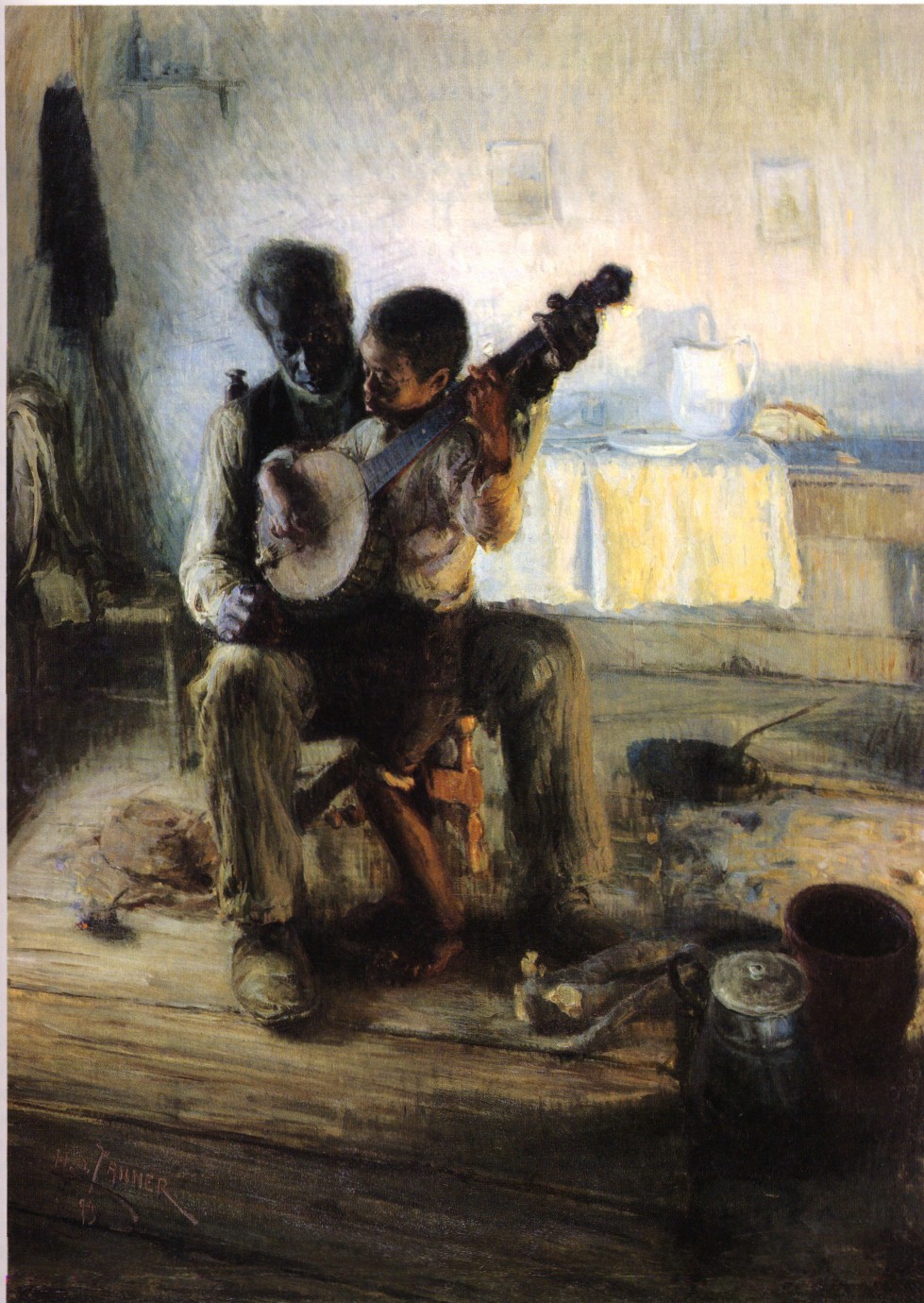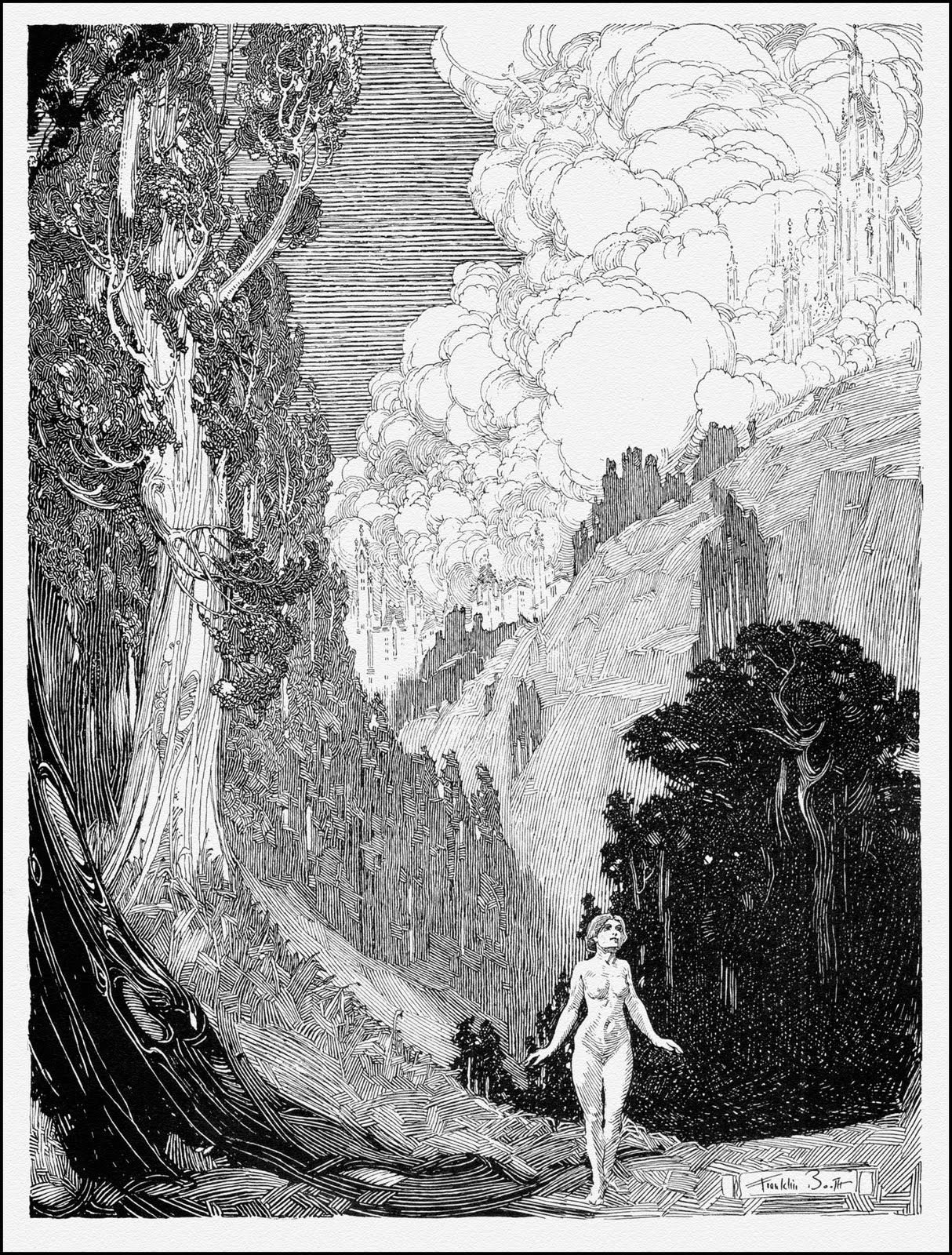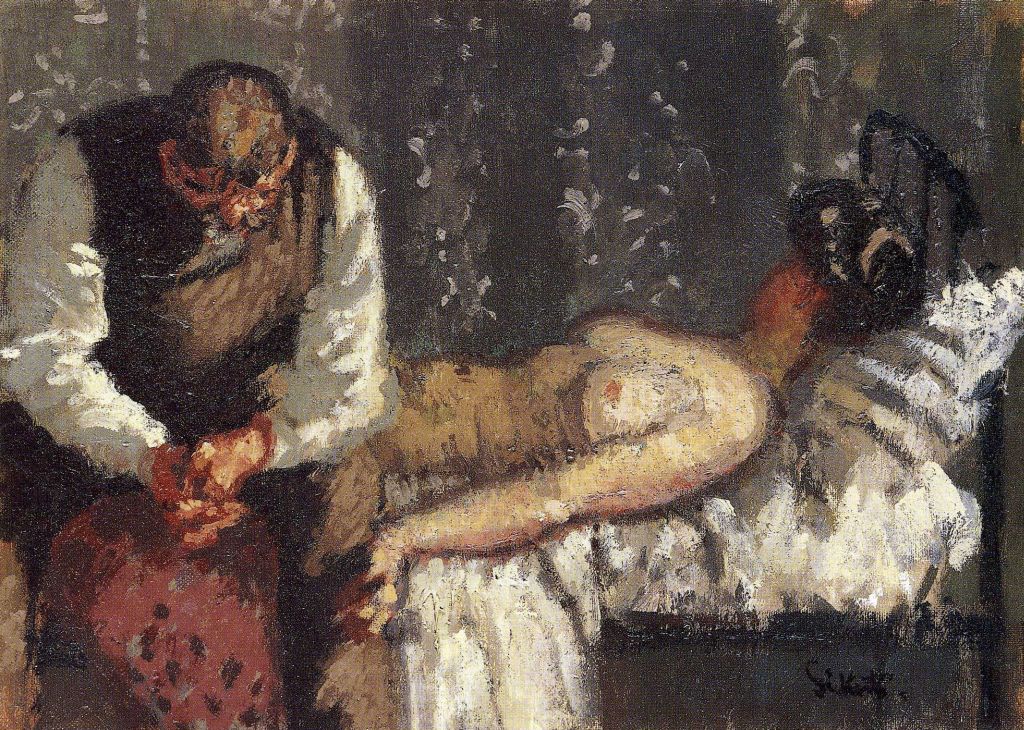One of the challenges of memorable art is capturing an emotional moment between people. It can be something extreme like a moment of action, or something very subtle in the way a profile looks. Hitting the middle ground of softer actions and subtleties is difficult, it can lean one way or the other very quickly.
It’s one of the reasons that I love this piece, and how Tanner captured this beautiful moment by playing the middle. He could have chosen a moment where the old man is showing the child how to play, or the moment when the child takes the idea and runs with it. Everything about this image is more balanced, and we’ve hit the perfect moment between the old and the new.
Consider the setting, and the way Tanner set up the action. The chair is placed in the center of the room, equidistant from the fireplace and the window. Tanner didn’t even have to tell us there was a window or a fireplace, the way he gorgeously painted the light tells us as much. The characters are right on the line of the warmth of the fire and the cold of the outside. They are also placed in the center vertically, in between the flat of the wall and the softness of the wooden flooring.
What Tanner created here was not only a sense being centered visually, but his techniques center us emotionally. The old man and the boy have similar holds on the instrument, and while the boy is touching the floor he’s clearly also relying on the old man for balance. Though Tanner offered us an almost mathematical vision of balance in his composition, it is the swing of his brush dabbling in both realism and impressionism that brings us in emotionally. The realism gives us a sense that this could very well be a true scene from life, and the impressionistic flair softens the relationship between the two characters. It is very clear that these two are intrinsically linked, not just a random older man and child.
We forget that it is a painting, that this is an unfeeling canvas. We forget that these aren’t real people, and this isn’t a real event. Instead, for me at least, I see an emotional core that resonates with me. I see a grandfather, sitting with his grandson, sharing a beautiful moment between generations.
See it larger on WikiArt
Addendum
While I was researching this piece, I came across an excellent article about Tanner and the painting. The article, written by Farisa Khalid, really clarifies the artist and the culture the painting was made in, and is well worth your time to check out.
See previous editions and subscribe to new articles here.
Henry Ossawa Tanner, The Banjo Lesson by Farisa Khalid
smarthistory.org/tanner-banjo/
References
The Banjo Lesson, Henry Ossawa Tanner
1893, Oil on canvas, 125 cm × 90 cm
Hampton University Museum, Hampton, VA
https://en.wikipedia.org/wiki/Henry_Ossawa_Tanner
https://www.wikiart.org/en/henry-ossawa-tanner/the-banjo-lesson-1893
https://www.ncbi.nlm.nih.gov/pmc/articles/PMC2600184/



